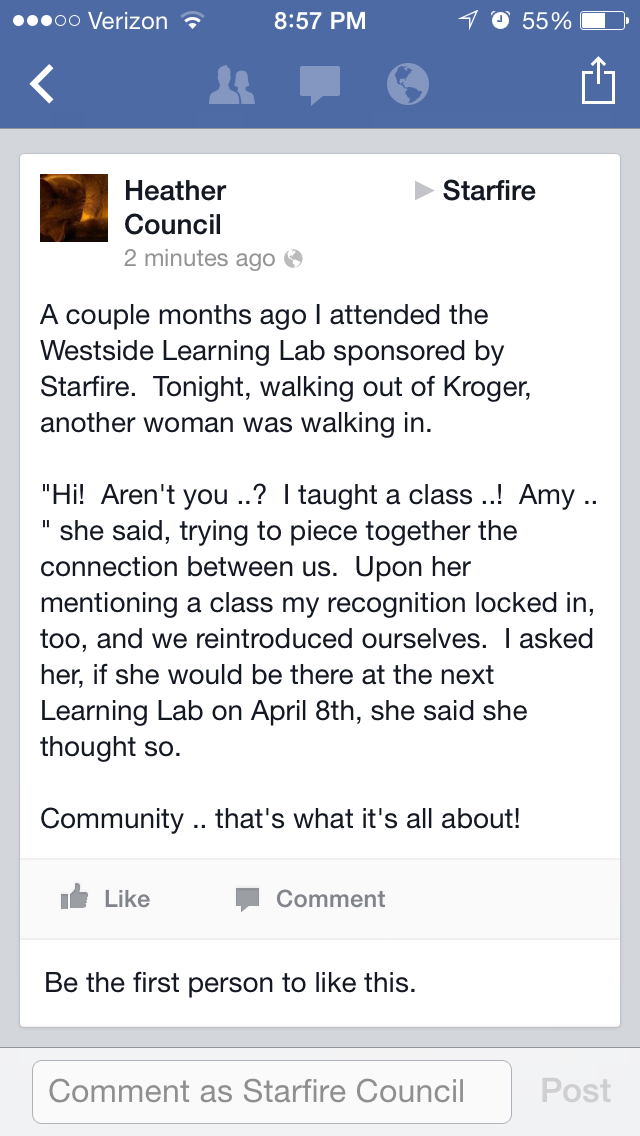Recently, I’ve been trying little “faith experiments.”
You can probably guess, then , that I was raised Catholic, so I wrestle with what/how to raise my children spiritually.
Recently, I had been noticing that whenever I went to Mass, my thoughts wandered all over the place. They floated into the past, into the future, around work, family, what the people in front of me were wearing…Essentially, my mind was on most everything but Jesus, God, or faith.
So I decided that one Sunday morning, I was going to walk to Divine Mercy on Taylor Avenue in Bellevue, and just read the Bible without actually participating in Mass. My thinking was that I could still be present in the church of my upbringing, and practice mindfulness of spiritual presence without the distractions of the Catholic “rigmarole” of rote kneeling, standing, responding, etc. (My friend Sonny says that the point of that “rigmarole” is to actually bring mindfulness, and he’s probably right in this, but it wasn’t working for me.)
So one Sunday in June, I set out with my Bible and an article that a friend I respect and admire had emailed me a couple weeks prior. I read his email briefly, and noted that the article he was recommending had something to with “Spanish Jesuits” and our shared work around inclusion. It sounded interesting, so I printed it off and took it with me that morning, without having any clue what the article was about.
I got up and headed down Center Street, carrying my Bible and this article. As I approached Taylor, I heard a man and a woman speaking loudly at each other. As I crossed the street, I saw a man walking his dog. He said “OK, 123 Taylor? Jim? Got it!”
I couldn’t see the woman at first, but as I crossed the street, saw that she was laying on the sidewalk, obscured by a parked car. She was saying something like “I’m alright! Just get my boyfriend, Jim, at 123 Taylor. He’ll help me.”
The man tried to get her to sit on a nearby public bench, but she waved him off.As he walked toward me, I asked him “Is she alright?”
“Yeah,” he said, “She just tripped on the sidewalk and fell. I’m going to get her boyfriend to help her up. He’s at 123 Taylor.”
“That’s right up the street,” I told him. It was just past the front doors of Divine Mercy. We walked for a bit together, and he complained about the lack of maintenance of the sidewalks.
As we approached the church, I said “So, do you need any help?”
“No. I got this.” He said.
“Cool. Well, thank you for doing that,” I told him, and peeled off into the front doors of Divine Mercy to commence my “faith experiment.”
I sat down in a back row, to minimize any distraction I might create by not participating in the kneeling, standing and responding.
Within the first few minutes, I noticed two things:
There is not really any way to go unnoticed if you choose to “not participate” in a Catholic Mass. I felt sideways glances, and people looking at me, as I tried to read the Bible…and even if that was only in my imagination (quite possibly), the internal judgment, at least, was there.
Also, I literally couldn’t “not participate” in the kneeling, standing, responding of the Mass. 37 years of conditioning had me physically unable to “not participate.” It was impossible to concentrate!
I finally quieted my mind enough to read a bit of the Bible, and finished a few chapters before I picked up the attached article that my friend had sent me. As I read it, I discovered that it revolved around a terrific question: How might we stand against these big systems that create so much misery for so many people?
The article went on to examine answers to that question, in the framework of the parable of the Good Samaritan.
It described the “man half-dead” laying on the side of the road. It described how the Levite and the Priest both took “a wide berth” around the man so as to avoid him and “preserve their spiritual purity.” It was only the Samaritan who took care of the man, going to great lengths to ensure he was cared for, while other supposedly holier men avoided the situation altogether.
So here I was, coming to the profound, humbling and embarrassing insight that I was the Priest/Levite, while a woman –a neighbor– was laying out on the side of the road outside the church where I was sitting comfortably, surrounded by healthy and mostly well-off people.
But what if the man walking his dog had decided not to knock? What if her boyfriend wasn’t home? What if she passed out or had a concussion before anyone got there?
I could have sat with her or helped her to the bench. I could have walked with the man walking his dog to make sure he connected with her boyfriend. I could have done about 15 different things, but instead, I was sitting here, doing a “faith experiment,” trying to stick it to the Catholic Church!
I got up, and walked outside. She was no longer on the sidewalk. So I walked down to the address she had given the man walking his dog. There was a man in the yard, and I asked him if his name was Jim.
“Yeah,” he said.
I’m being honest here: At first glance, “Jim” made me uncomfortable. My judgment was in full force. He was drinking a 40 ounce bottle of beer, a little unusual for 8:00 on a Sunday morning. He had cutoff jean shorts on and wasn’t wearing a shirt, which showed off a lifetime of tattoos and big scar on his chest….And he had a mullet.
“There was a woman who fell on the sidewalk…” I started.
“Oh yeah!” Jim said, enthusiastically. “That’s my girlfriend. She’s OK, she’s right in here! Come on in!”
“Oh, it’s alright,” I began. “I just wanted to make sure she was OK…”
“Come on in,” he insisted, and walked me into their living room.
He introduced me to “Linda,” who was sitting on the couch with bloody knees and bloody elbows. She was smiling and laughing about her misfortune, but insisted that she was OK. Jim had put neosporin on her cuts and cleaned her up. We chatted for about 20 minutes, and promised we’d continue to see each other around the neighborhood.
That morning was a gift to me. I met two wonderful people in Jim and Linda, who my life would not typically overlap. And I witnessed a man, who was just out walking his dog, take the time to take care of someone lying on the sidewalk.
But the greatest gift I received was more like a smack to the forehead. I had been asking “where is my church?” and I found part of my answer in passing up my responsibility and opportunity to take care of a woman lying on the sidewalk. I let the suffering of a neighbor play second fiddle to my desire to be “closer to God” or “spiritually strong.”
Hmmmm….I wonder how many other ways I do this on a daily basis. I am often so preoccupied with what I think needs to change or get done, that I miss the good that I could be doing in the real, local and present moment.
The title of the article my friend sent me is “Taking stock of reality, Taking Responsibility for Reality, And Taking Charge of Reality” by Jose Laguna. Click that link for a copy to read. It’s well worth the time.
The title alone is provocative: How often am I thinking about what everyone else “oughtta do” and neglect the reality in front of my face? How many chances have I wasted to take charge of things in a tangible way?
I’ve since shared this story with a few friends, and we laugh over the timing of the article and the moment. What a blessing.
And something helpful if you read the article: replace “Global Resistance Movement” with “Local Resistance Movement,” so as not to get too lost in the politics, theory or “elsewhere” trap that accompanies big-picture thinking.
Otherwise, you’ll miss the men and women lying “half-dead” in your own life that are calling to you to take stock, responsibility and charge of reality.






























